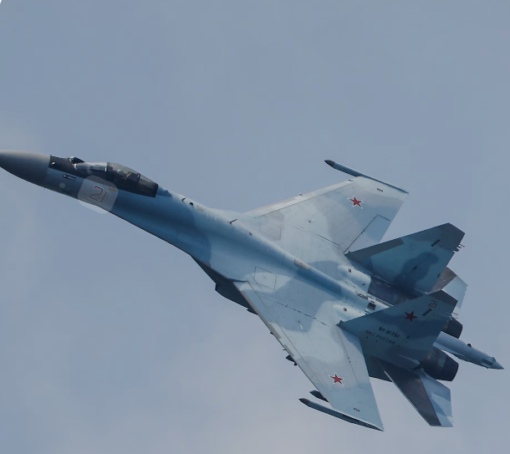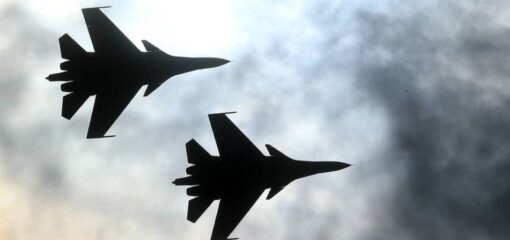American fighter jets scrambled this week to confront a group of Russian military aircraft that entered the Air Defense Identification Zone off the coast of Alaska, the latest in a series of aerial encounters underscoring rising hostilities between Moscow and Washington.
According to U.S. defense officials, the incident involved long-range Tu-95 strategic bombers escorted by Su-35 fighter jets, a combination that has frequently been used by Russia to project strength and test the readiness of rival air forces.
The confrontation did not result in any direct conflict, but the timing and scale of the flights have raised alarm in Washington and across NATO capitals.
The Air Defense Identification Zone, or ADIZ, is a buffer that extends beyond sovereign airspace where military forces monitor approaching aircraft. While it is not considered national territory, foreign planes entering without prior clearance are regarded as potential threats.

NORAD, the joint U.S.-Canadian command responsible for protecting North American skies, confirmed that multiple fighters were dispatched from Alaska to shadow and escort the Russian aircraft until they turned back.
The scramble lasted several hours and involved both American F-22 Raptors and supporting tanker aircraft to sustain operations over long distances. Officials stressed that the Russian planes never entered U.S. or Canadian sovereign airspace, but the scale of the maneuver was nonetheless seen as provocative.
Military analysts note that Russia has stepped up such flights in recent months, often using its fleet of Cold War-era bombers to probe Western defenses. The Tu-95, known by NATO as the “Bear,” is a nuclear-capable turboprop aircraft that can carry cruise missiles and has been a symbol of Russian strategic power for decades.
Escorting them with advanced Su-35 fighters adds another layer of complexity to the encounters, demonstrating Moscow’s willingness to commit valuable resources to aerial intimidation. Each flight forces the U.S. to deploy its own advanced fighters, an expensive and resource-intensive exercise that strains readiness.
Defense officials believe the Russian military sees these flights not only as training but as psychological pressure at a time when relations with the West are at their lowest point in decades.
The timing of the latest incident is particularly sensitive. With global attention fixed on conflicts in Eastern Europe and the Middle East, Moscow’s decision to test U.S. defenses near Alaska suggests an effort to remind Washington that Russia retains the ability to threaten American territory directly.
The Arctic region has become increasingly important to both sides, with melting ice creating new shipping routes and heightening competition over energy resources.
For the Kremlin, showcasing its bomber force near Alaska reinforces the message that it is still capable of challenging the United States even as its military remains heavily engaged in Ukraine.
NORAD has confirmed that there were no unsafe maneuvers or direct radio communication during the encounter, but officials did not downplay the seriousness of the situation. Each time Russian aircraft approach the ADIZ, the U.S. must assume the possibility of a hostile action until proven otherwise.
The presence of nuclear-capable bombers adds urgency, and American pilots train extensively to respond to such scenarios within minutes.
The coordination required to scramble jets, maintain radar surveillance, and ensure mid-air refueling highlights the immense logistical effort behind what appears to be a routine interception.
For Washington, the repeated nature of these encounters demonstrates Moscow’s strategy of stretching U.S. defenses and probing for weaknesses.
Russian state media has portrayed the flights as routine patrols in international airspace, accusing the United States of overreacting. Moscow insists that its military aircraft operate in accordance with international law and that NATO countries engage in similar missions near Russian territory.
However, Western officials argue that the scale, frequency, and nuclear potential of the Russian flights distinguish them from standard patrols. With tensions already high over Moscow’s actions in Ukraine, such aerial maneuvers are widely viewed as deliberate provocations intended to remind NATO of Russia’s capabilities.
For residents in Alaska and Canada, the interceptions serve as a reminder that geopolitical rivalry is not an abstract concept but a reality on their doorstep.
The United States has long maintained that protecting the northern frontier is a core national security priority. Alaska hosts some of the most advanced air defense infrastructure in the world, including radar systems designed to detect incoming aircraft and missiles from across the Arctic.
The state also serves as a forward base for fighter jets and bomber squadrons capable of reaching Asia and Europe. In recent years, Washington has invested heavily in upgrading its Arctic presence, aware that both Russia and China see the region as critical to future strategic competition.
Each Russian flight into the ADIZ reinforces the importance of these investments and the need to maintain constant vigilance.
In Congress, lawmakers quickly seized on the incident to call for further strengthening of U.S. air defenses. Members of the Senate Armed Services Committee warned that repeated Russian incursions highlight vulnerabilities that adversaries could exploit.
Some argued for accelerating deployment of next-generation radar and missile defense systems in Alaska, while others pressed for increased funding for Arctic infrastructure to ensure rapid response to any potential escalation.
The Trump administration has attempted to balance deterrence with caution, making clear that while the United States will always defend its skies, it does not seek direct military confrontation with Russia.
Still, the political consensus is that Washington cannot afford to appear weak at a time when Russia is testing boundaries across multiple theaters.
For ordinary Americans, especially those in Alaska, the interceptions serve as a reminder of the Cold War era when Soviet bombers routinely flew near North America. While such encounters never escalated into open conflict, the constant tension was part of daily life for decades.
Many see the return of these confrontations as evidence that the world is once again entering an era of great-power rivalry where military brinkmanship carries real risks. Defense analysts warn that the danger lies not only in deliberate aggression but also in the potential for miscalculation.
A mechanical failure, misinterpreted maneuver, or accidental incursion into sovereign airspace could spark a crisis with little time for diplomacy.

Internationally, the incident has further strained already tense relations between Russia and NATO. European allies, already under pressure from Moscow’s military actions in Ukraine, view the flights as part of a broader strategy to keep the West on edge.
Canada, as a joint partner in NORAD, has reiterated its commitment to defending North America and called on Russia to reduce provocative activities. NATO officials, meanwhile, emphasize that the alliance remains united in deterring any aggression while avoiding steps that could escalate into direct confrontation.
The balancing act reflects the complexity of dealing with a Russia that continues to use both conventional and hybrid tactics to challenge the West on multiple fronts.
As the world watches these developments, the broader implications are clear. The Arctic is no longer a frozen backwater but a front line in global competition.
With both Russia and the United States modernizing their militaries for operations in the far north, each encounter carries symbolic weight. For Moscow, the flights project power and defiance. For Washington, the interceptions demonstrate readiness and resolve.
The danger lies in how thin the line is between signaling strength and sparking conflict. What begins as a calculated show of force could, under the wrong circumstances, escalate into a confrontation with consequences far beyond the icy skies of Alaska.
For now, the incident ends as so many others have, with Russian aircraft turning back and American fighters returning to base. Yet the pattern is unmistakable: Moscow is determined to keep testing, and Washington is equally determined to respond.
Each new encounter reinforces the reality that rivalry between the two nuclear powers is alive, active, and increasingly dangerous in the most remote reaches of the world.


